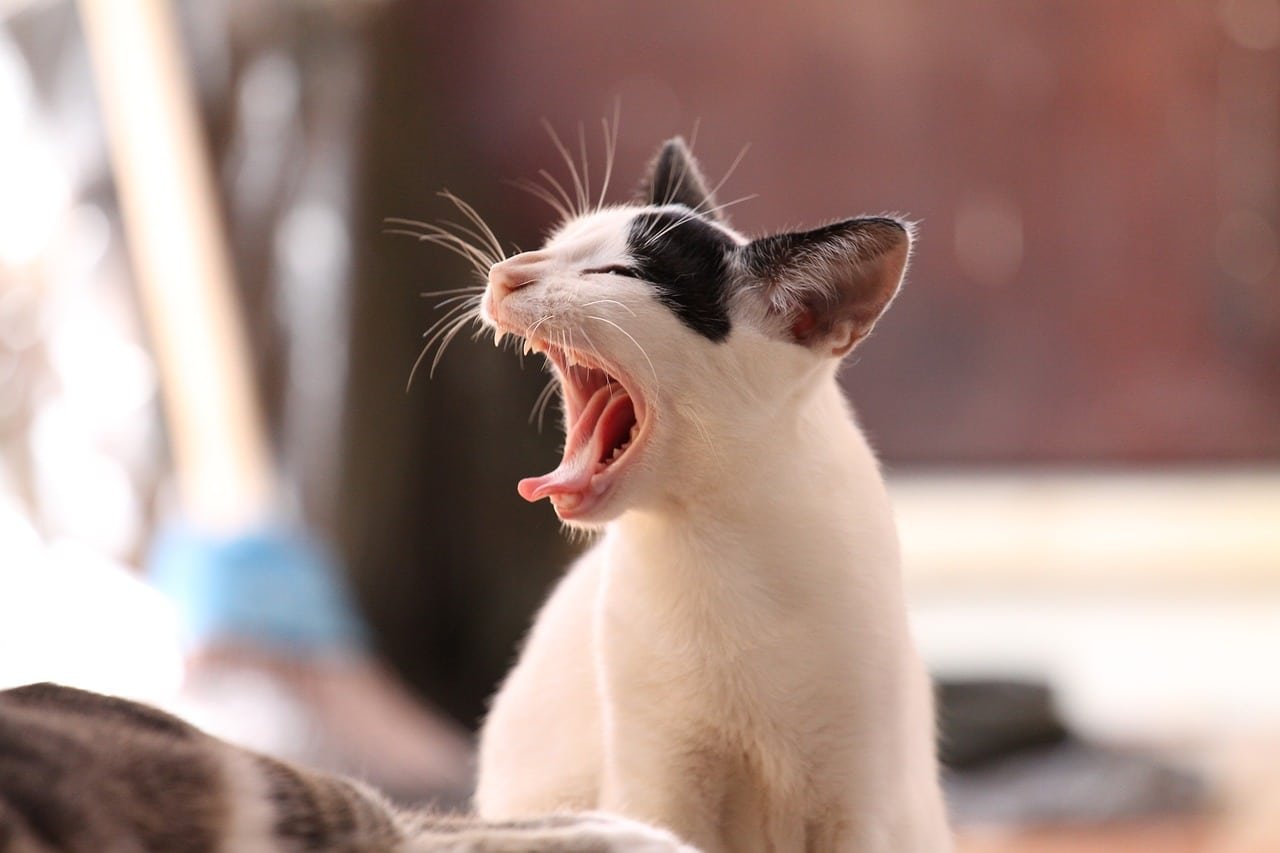Understanding your cat’s dental anatomy is essential for ensuring their overall health and well-being. One critical aspect of feline dental health is the number and function of their canine teeth. This comprehensive guide explores how many canine teeth cats have, their specific functions, common dental issues, and tips for maintaining your cat’s dental health.
How Many Canine Teeth Do Cats Have?
Cats have a total of four canine teeth, which are often referred to as fangs. These teeth are among the most noticeable in a cat’s mouth due to their prominent size and sharpness.
- Number: 4 (two on the top and two on the bottom)
- Location: The canines are located next to the incisors, on both the top and bottom jaws.
- Structure: Canine teeth are long, pointed, and curved, designed for piercing and holding onto prey.
The Function of Canine Teeth in Cats
The canine teeth in cats serve several vital functions that are crucial for their survival and daily activities. Here’s a detailed look at their roles:
1. Hunting and Prey Capture
Cats are natural predators, and their canines are perfectly adapted for hunting. These teeth are used to grasp, puncture, and hold onto prey. The sharp points of the canines allow cats to deliver a killing bite, often aimed at the neck of their prey to ensure a quick and effective kill.
2. Self-Defense
In the wild, cats must defend themselves against predators and rivals. The canines play a critical role in this, enabling cats to inflict serious wounds on attackers or competitors. Even domestic cats retain this instinct, using their canines in aggressive interactions or play-fighting.
3. Feeding and Eating
Canine teeth are essential for tearing and shredding food. When cats eat meat, they use their canines to tear off manageable pieces. This action mimics their natural behavior of consuming prey in the wild.
4. Communication
Cats use their teeth, including their canines, to communicate. A display of canines can be a warning sign to other animals or humans, signaling that the cat feels threatened or is ready to defend itself.
Common Dental Issues Affecting Canine Teeth
Just like any other part of the body, canine teeth are susceptible to various dental issues that can affect your cat’s overall health. Awareness of these problems can help you take proactive steps to prevent or address them.
1. Broken or Fractured Canines
Canines can become broken or fractured due to trauma, such as falls, fights, or chewing on hard objects. This can lead to pain, infection, and difficulty eating.
Symptoms:
- Visible cracks or chips
- Swelling around the affected tooth
- Reluctance to eat or chew
- Pain or sensitivity when touching the affected area
Prevention and Treatment: Avoid giving your cat excessively hard toys or bones. If a fracture occurs, seek veterinary care promptly to assess the damage and provide appropriate treatment.
2. Periodontal Disease
Periodontal disease is one of the most common dental issues in cats. It involves the inflammation and infection of the gums and supporting structures of the teeth.
Symptoms:
- Bad breath
- Red or swollen gums
- Difficulty eating
- Drooling
- Loose or missing teeth
Prevention and Treatment: Regular dental check-ups and cleanings, along with a good oral hygiene routine at home, can help prevent periodontal disease. Early detection and treatment are crucial to prevent severe complications.
3. Tooth Resorption
Tooth resorption is a condition where the structure of the tooth breaks down and is reabsorbed by the body. It often affects the canines and can be challenging to detect without a veterinary examination.
Symptoms:
- Difficulty eating
- Drooling
- Swelling around the affected tooth
- Behavioral changes such as hiding or decreased activity
Prevention and Treatment: Regular veterinary dental examinations can help catch this condition early. Treatment may involve extraction of the affected teeth to relieve pain and prevent further issues.
4. Stomatitis
Stomatitis is a severe inflammation of the mouth’s soft tissues, including the gums, tongue, and inner cheeks. It can be caused by infections, immune system issues, or dental problems and often requires veterinary intervention.
Symptoms:
- Severe pain when eating or drinking
- Red, inflamed mouth tissues
- Excessive drooling
- Bad breath
- Weight loss
Prevention and Treatment: Regular dental check-ups and addressing any underlying health issues are crucial for prevention. Treatment often involves managing pain and inflammation, and in severe cases, extracting affected teeth.
Maintaining Your Cat’s Canine Teeth
Proper dental care is essential for keeping your cat’s canines and other teeth healthy. Here are some tips to maintain your cat’s dental health:
1. Regular Veterinary Check-ups
Schedule regular veterinary check-ups to monitor your cat’s dental health. Your vet can perform professional cleanings and check for signs of dental issues that may require treatment.
What to Expect During a Dental Check-Up:
- Examination of teeth and gums
- Professional cleaning to remove plaque and tartar
- Possible X-rays to check for issues below the gum line
- Treatment for any detected dental issues
2. Tooth Brushing
Brushing your cat’s teeth regularly can help prevent plaque and tartar buildup. Use a cat-specific toothbrush and toothpaste, and gradually introduce the brushing routine to make your cat comfortable.
How to Brush Your Cat’s Teeth:
- Start by gently lifting your cat’s lips and rubbing their teeth with your finger.
- Gradually introduce the toothbrush and toothpaste.
- Brush in small, circular motions, focusing on the gum line.
3. Dental Treats and Toys
Provide dental treats and toys designed to reduce plaque and tartar buildup. These products can complement regular brushing and professional cleanings.
Examples:
- Dental chews that promote teeth cleaning
- Toys that encourage natural chewing behavior
4. Healthy Diet
A balanced diet is essential for maintaining your cat’s overall health, including their dental health. Some cat foods are specially formulated to support dental health by reducing plaque and tartar buildup.
Food Choices:
- Dry kibble that promotes teeth cleaning
- Dental-specific foods that help manage plaque buildup
Signs Your Cat May Have Dental Issues
Being vigilant about your cat’s dental health means recognizing the signs of potential issues early. Here are some common signs that your cat may have dental problems:
1. Bad Breath
Persistent bad breath can be a sign of dental disease. While some odor is normal, especially after eating, a strong, foul smell can indicate an underlying issue.
2. Difficulty Eating
If your cat is having trouble eating, chewing on one side of the mouth, or dropping food, it could be due to dental pain or discomfort.
3. Drooling
Excessive drooling can be a symptom of dental disease or a foreign object stuck in the mouth.
4. Behavioral Changes
Changes in behavior, such as increased aggression, hiding, or reluctance to be touched around the mouth, can indicate dental pain.
5. Visible Signs
Look for visible signs such as red, swollen gums, loose teeth, or any unusual lumps or bumps in the mouth.
The Role of Diet in Dental Health
A proper diet plays a significant role in maintaining your cat’s dental health. Here are some dietary considerations:
1. Dry vs. Wet Food
- Dry Food: Dry kibble can help reduce plaque buildup due to its abrasive texture. However, it should not be the sole method of dental care.
- Wet Food: While wet food is beneficial for hydration, it does not provide the same abrasive action as dry food. A combination of both can be ideal.
2. Dental-Specific Foods
Some cat foods are formulated specifically to promote dental health. These foods contain ingredients that help reduce plaque and tartar buildup and are often designed to be more abrasive to clean teeth as the cat chews.
3. Supplements and Additives
There are various dental supplements and water additives available that can help maintain your cat’s dental health. These products can help reduce plaque and tartar buildup and improve overall oral hygiene.
Tips for Making Dental Care Easier
Dental care can sometimes be challenging for both you and your cat. Here are some tips to make the process smoother:
1. Start Young
Introduce dental care routines early in your cat’s life. Kittens are more adaptable to new routines, and starting early can help establish lifelong habits.
2. Use Positive Reinforcement
Reward your cat with treats and praise during and after dental care sessions. This helps create a positive association with dental hygiene.
3. Be Patient
Dental care takes time and patience. Start slowly and gradually increase the duration and frequency of dental care activities.
Conclusion
Understanding the importance of your cat’s canine teeth and how to care for them is vital for their overall health and well-being. Cats have four canine teeth, which play crucial roles in hunting, self-defense, feeding, and communication. Maintaining these teeth involves regular veterinary check-ups, a good dental hygiene routine at home, and a balanced diet.
By staying vigilant for signs of dental issues and being proactive in your cat’s dental care, you can help ensure they live a healthy and happy life. Proper care of your cat’s canine teeth not only supports their oral health but also contributes to their overall quality of life.
- Can Cats Without Teeth Eat Dry Food?
- Cats Without Teeth
- Do Cats’ Teeth Need Special Care?
- Why Do Cats Rub Their Teeth on You?
- How to Keep Your Cat’s Teeth Clean Without Brushing:
- Why Do Cats Grind Their Teeth?
- Why Do Cats Chatter Their Teeth?
- When Do Cats Lose Their Baby Teeth?
- How Often Do Cats Need Dental Cleaning?
- Do Cats’ Broken Teeth Grow Back?
- Cat’s Bottom Teeth: Anatomy, Function, and Dental Care
- How Many Permanent Teeth Do Cats Have?
- How Many Canine Teeth Do Cats Have?
- How Many Front Teeth Do Cats Have?
- How Many Teeth Do Adult Cats Have?
- How Many Teeth Do Cats Have?
Discover more from EMMOCEB
Subscribe to get the latest posts sent to your email.






